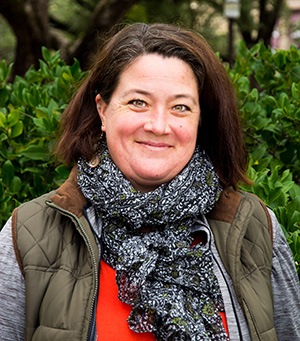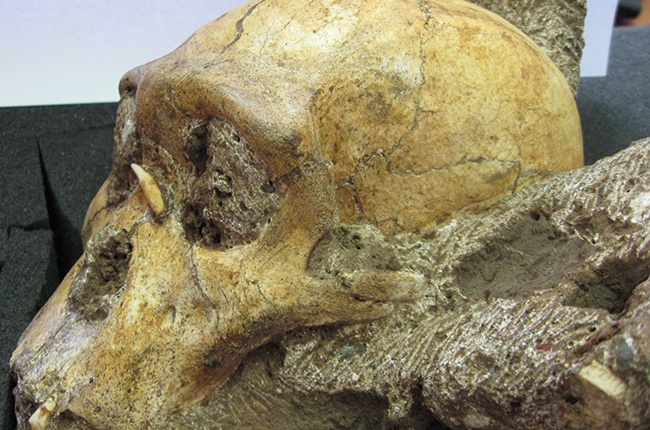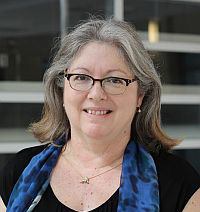 Texas A&M was ranked by BestColleges.com as first in Texas and 12th nationally to graduate the most women in STEM (science, technology, engineering and mathematics) fields. While this comes as no surprise to many, some may not realize the role the College of Liberal Arts plays in STEM courses and degree plans.
Texas A&M was ranked by BestColleges.com as first in Texas and 12th nationally to graduate the most women in STEM (science, technology, engineering and mathematics) fields. While this comes as no surprise to many, some may not realize the role the College of Liberal Arts plays in STEM courses and degree plans.
With six of its 12 departments classified by the National Science Foundation (NSF) as STEM fields—anthropology, communication, economics, political science, psychology, and sociology—the College of Liberal Arts is at the forefront of significant research in this area.
The following professors and departments highlight some of the numerous STEM areas of Liberal Arts. It is through these fields the college is able to gain national renown and continue to have an impact on the world around us.
Brian Anderson – Department of Psychology
“Why is it so hard to break a habit?” asked Brian Anderson, an assistant professor for the Department of Psychology. “We are still trying to understand that very fundamental question.”
Anderson, a cognitive neuroscientist who joined Liberal Arts faculty this fall, has pioneered the study of what he calls attention biases—a tendency to direct your attention to something even when it conflicts with your goals, making it difficult to ignore.
While attention biases are usually associated with addiction, Anderson believes this cognitive process applies to everyday people.
“Any time you associate an object with a reward outcome, over time that object becomes salient. It becomes difficult to take your mind off of it,” he said. “There’s this competition in your brain where you’re trying to ignore it, but that object has a powerful ability to raise consciousness to itself. That makes you more likely to act in a way to pursue that reward.”
In other words, whether it’s a drug or a slice of cake, we are all susceptible to addictive behavior.
As part of his current research, Anderson studies participants’ brains while they play a computer game. They are first rewarded with money for finding simple colored objects, training their brain to associate a certain color with a reward.
They later perform another task in which the previously-rewarded color is no longer a factor; however, the objects previously associated with a reward still drew participants’ attention.
Their ability or inability to ignore these previously reward-associated objects are assessed in various ways, including the use of an MRI machine to measure brain activity.
As for breaking the habit, Anderson said that focusing one’s attention on something else rewarding, rather than suppressing the urge to indulge, will yield the most successful outcome.
“The long-term goal is to show us how we can more effectively curb these kinds of automatic habits,” he said. “I really want us to understand the most fundamental building blocks of those higher-level preferences and decisions.”
Anna Linderholm – Department of Anthropology
If the history of humanity is a puzzle, ancient DNA researchers like Anna Linderholm, an assistant professor with the Department of Anthropology, possess the oldest and most arcane pieces.
Linderholm is an archaeologist and geneticist from Sweden who recently came to Texas A&M from the University of Oxford. She is coordinating a new ancient DNA lab set to open this spring, and she will oversee its operations.
Ancient DNA is genetic materials that have been extracted from ancient human or animal remains, soil, or ice. Some of the oldest known DNA studied is that of a 700,000-year-old horse from permafrost Alaska. Linderholm says colder climates better preserve the DNA, and, therefore, make it easier to study.
“If it’s perfectly preserved, we could potentially study the DNA that’s a million years old,” she said.
Linderholm has studied both human and animal DNA. While earning her Ph.D. in Sweden, she studied Neolithic sites—archaeological sites dating back to the latter part of the Stone Age.
“Neolithic sites are where the first farmers lived roughly 6,000 years ago,” she said. “Before that they were hunter-gatherers. In Sweden, there were two populations that lived side-by-side. One was a group of hunter-gatherers and the others were farmers.”
Academics argued over the relationship between the two populations. Some believed the two groups were originally one group, while others believed the farmers migrated from somewhere else entirely.
“An ancient DNA analysis showed the differences in their genetic signal,” Linderholm said. “You could see the farmers came from central parts of Europe, whereas the hunter-gatherers were more eastern.”
Linderholm is also currently researching ancient dog DNA. An article in Science references her research that dogs might have been domesticated longer ago than previously believed. It also notes they were domesticated in two different places—Europe and east Asia.
“DNA is made up of four bases: A, C, T, and G,” Linderholm said. “And the order of those bases will create proteins that will tell us, for example, eye and hair color. In the case of animals, it will tell us the coat color and other animal traits. That’s why it’s important to look at ancient DNA—to see what things actually looked like in their time.”
Studying ancient DNA requires a lab built specifically to protect the degraded and fragile materials. However, Linderholm believes the effort of building a specialized lab to study ancient DNA is important to us all.
“If we don’t know our history, we can’t really tell what’s going to happen in the future,” she said. “When I get my lab up and running, I’d like to study how we’ve previously adapted to climate change. I believe that could help us in the future.”
Catherine Eckel – Department of Economics
Catherine Eckel, the Sara and John Lindsey Professor of Economics in the College of Liberal Arts and Texas A&M University Distinguished Professor, specializes in behavioral economics—a recent and increasingly influential field that uses human behavior to explain economic decision-making.
Whereas standard economic theory assumes that consumers are always rational and forward-thinking, behavioral economics takes into consideration the realities of the human condition, such as emotions, confirmation bias, and loss aversion.
“Behavioral economics recognizes that decision-makers in the economy are psychological beings, subject to decision-making biases that have long been documented by psychologists,” Eckel said. “One of the most important impacts of this approach is the design of public policies that take into account the way people actually make decisions.”
The field is so prominent that its concepts are applied to other areas, such as healthcare, marketing, and climate policy.
Eckel’s research is no exception. She has made contributions of interest to both academics and the public at-large, studying charitable giving, risk tolerance, counter-terrorism, gender differences, and discrimination based on both race and gender.
She also directs her department’s Behavioral Economics and Policy Program (BEPP), which is a collection of both graduate and undergraduate economics courses that focus on experimental and behavioral economics and hosts the field in the Ph.D. program. BEPP students participate in significant research projects, and many students design and run independent research projects using the Economic Research Laboratory within the College of Liberal Arts.
Recently, Eckel and her team were featured in the general-science journal PLOS ONE for their study on group cooperation to avoid group extinction.
“To be able to publish something like this, an economic study, in a general science journal is really unusual and pretty exciting,” Eckel said.
For this study, Eckel and her team conducted a standard public goods game that placed individuals into random groups of four. Individuals were then given monetary units to either contribute to the group fund or keep for themselves.
When the group was faced with group extinction, a kind of extreme intergroup competition—meaning the groups who contributed the least to the group fund would have to leave the game—the results were surprising: group members contributed nearly all of their individual money to the group fund.
“People were quite surprised about this result,” Eckel said. “If extinction at the group level is a possibility then that really makes people cooperate within the group to make sure their group survives. Extreme intergroup competition enhances cooperation.”
#####
This article was originally posted on the College of Liberal Arts site.











